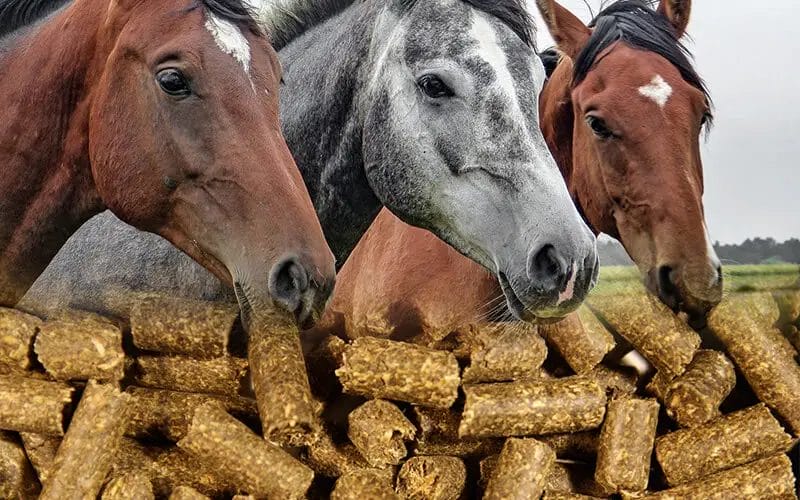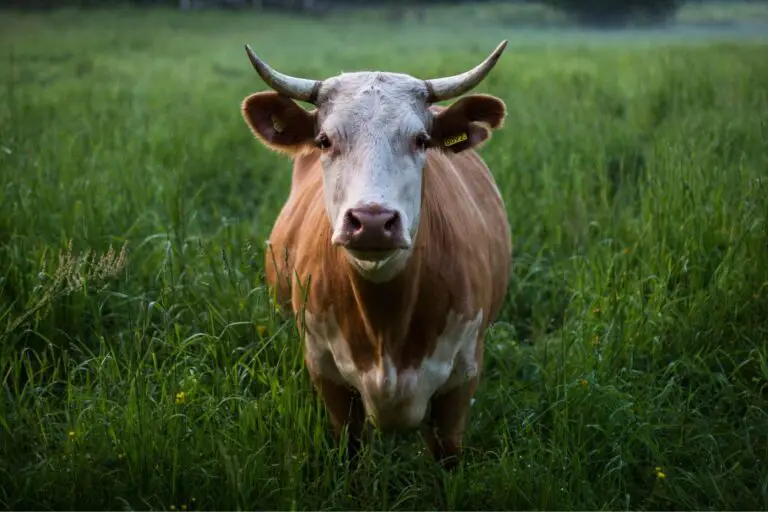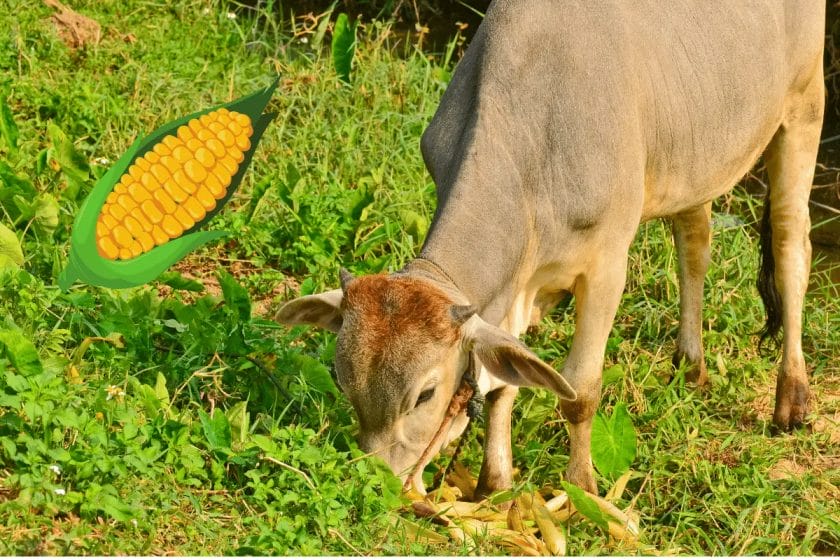While cattle and horses are both herbivores, it is generally not recommended to feed horse feed to cattle. Horse feed is specifically formulated to meet the nutritional needs of horses, which differ from those of cattle. Cattle have different digestive systems and nutritional requirements, including the need for roughage. Feeding cattle horse feed could lead to digestive issues and nutrient imbalances. It is best to consult with a veterinarian or livestock nutritionist for appropriate feed options for cattle.

Understanding the Nutritional Compatibility of Horse Feed for Cattle
Horses and cattle are both herbivorous animals, but their dietary requirements differ due to variations in their digestive systems and metabolism. While horses are known for their ability to efficiently digest fibrous materials, cattle have a more complex digestive process that allows them to extract nutrients from a wider range of feed sources. However, there may be instances where horse feed is mistakenly consumed by cattle, either through cross-contamination or accidental ingestion. It is important to understand the nutritional compatibility of horse feed for cattle to ensure their health and well-being.
Differences in Digestive Systems
Horses have a simple stomach with a relatively small capacity and a single compartment hindgut, composed of the cecum and colon. They rely heavily on fermenting fibrous materials in the hindgut to extract nutrients. On the other hand, cattle possess a complex four-compartment stomach, including the rumen, reticulum, omasum, and abomasum. This multi-compartment stomach allows cattle to efficiently ferment and break down a wide range of feed sources.
Due to these differences, horse feed is generally formulated to meet the specific nutritional needs of horses, while cattle feed is designed to provide a balanced diet for cattle. Horse feed typically consists of a higher percentage of grains and concentrates, which may not be suitable for cattle.
Potential Challenges
If cattle accidentally consume horse feed, there are several potential challenges they may face. One of the main concerns is the difference in protein levels between horse feed and cattle feed. Horse feed typically contains higher protein content tailored to meet the needs of active horses. Cattle, on the other hand, require a more balanced protein-to-energy ratio.
Another challenge is the difference in mineral requirements. Horse feed may contain higher levels of certain minerals, such as copper and zinc, which are essential for horses but may lead to toxicity or imbalances in cattle. Additionally, the presence of additives, such as medications or supplements specific to horses, can pose risks to cattle health.
Health Risks
Consuming an improper diet can have negative effects on cattle health. Ingesting horse feed that is high in protein can lead to excessive nitrogen levels in the rumen, potentially causing metabolic issues. Overconsumption of certain minerals can lead to toxicities or imbalances, affecting the overall health and productivity of the cattle.
Furthermore, additives in horse feed, such as medications or growth promoters, may have adverse effects on the well-being of cattle. It is essential to carefully monitor the feed provided to cattle to prevent any potential health risks.
Prevention and Management
To prevent accidental consumption of horse feed by cattle, proper storage and feeding practices should be implemented. Horse feed and cattle feed should be stored separately and clearly labeled to avoid mixing them up. Feeding areas should also be clearly designated and monitored to ensure that each animal receives the appropriate feed.
In cases where cattle do consume horse feed, prompt action should be taken to minimize the potential negative effects. This may involve adjusting the cattle’s diet to compensate for any imbalances caused by the horse feed and monitoring their health closely. Consulting with a veterinarian or an animal nutrition expert can provide valuable guidance in managing such situations.
In summary, understanding the nutritional compatibility of horse feed for cattle is crucial to ensure the health and well-being of the animals. Horses and cattle have different digestive systems and dietary requirements, making it important to prevent accidental consumption of horse feed by cattle. Proper storage, feeding practices, and close monitoring of cattle’s health can help mitigate any potential risks associated with improper feed consumption.

Risks and Benefits of Feeding Horse Feed to Cattle
Feeding horse feed to cattle can be a topic of debate among farmers and animal nutritionists. While it may seem like a convenient and cost-effective solution, there are both risks and benefits to consider when making this decision.
Risks
1. Inadequate Nutritional Balance: Horse feed is specifically formulated to meet the dietary needs of horses, which differ from those of cattle. Horses are herbivores and require a diet high in fiber, while cattle are ruminants and require a diet with a balance of carbohydrates, proteins, and fats. Feeding horse feed to cattle can result in an inadequate nutritional balance, leading to health issues and reduced productivity.
2. Potential for Digestive Upset: Horse feed often contains ingredients that are safe for horses but may not be well tolerated by cattle. The digestive systems of horses and cattle differ, and feeding horse feed to cattle can disrupt their digestive processes, leading to digestive upsets such as colic, bloat, or diarrhea.
3. Risk of Mineral Imbalances: Horse feed may not contain the appropriate levels of minerals required by cattle. This can result in either deficiencies or toxicities, affecting the overall health and productivity of the animals.
Benefits
1. Availability and Cost: Horse feed is commonly available and can be purchased at a relatively lower cost compared to cattle feed. This can be beneficial for farmers looking to reduce expenses without compromising the nutritional needs of their livestock.
2. Possible Source of Energy: Some horse feeds contain ingredients that are high in energy, such as grains and oils. Feeding these feeds to cattle in small quantities can provide an additional source of energy, especially during times of increased energy requirements, such as during pregnancy or lactation.
3. Variety in Diet: Introducing horse feed into a cattle’s diet can provide them with a different source of nutrients and flavors. This can help stimulate their appetite and improve overall feed intake, leading to better growth and productivity.
In summary, feeding horse feed to cattle carries both risks and benefits. It is important for farmers to carefully consider the nutritional needs of their cattle and consult with an animal nutritionist before making any decisions. While horse feed may offer cost savings and variety in the diet, it can also lead to inadequate nutrition, digestive upsets, and mineral imbalances. Proper research and professional guidance are necessary to ensure the health and well-being of the cattle.

Guidelines for Incorporating Horse Feed into Cattle Diets
When it comes to feeding livestock, it’s important to provide them with a well-balanced diet that meets their nutritional needs. Cattle, in particular, require a mix of forage, grain, and supplements to thrive. While cattle feed is readily available, some farmers may consider incorporating horse feed into their cattle diets as an alternative or supplement. However, it’s essential to follow proper guidelines to ensure the health and well-being of the cattle. In this section, we will outline some important considerations and guidelines for incorporating horse feed into cattle diets.
1. Evaluate the Nutritional Content
Prior to incorporating horse feed into cattle diets, it’s crucial to evaluate the nutritional content of the feed. Horse feed typically consists of a higher concentration of fiber and lower protein levels compared to cattle feed. It’s important to ensure that the nutritional profile of the horse feed aligns with the dietary requirements of the cattle. Consult a livestock nutritionist or veterinarian to assess the nutritional content and suitability of the horse feed for cattle.
2. Gradual Transition
When introducing horse feed into cattle diets, it’s essential to make the transition gradually. Sudden changes in diet can cause digestive disturbances in cattle and potentially lead to health issues. Start by incorporating small amounts of horse feed into the cattle’s existing diet and gradually increase the proportion over a period of 7-10 days. This allows the cattle’s digestive system to adapt to the new feed gradually.
3. Monitor Feed Intake
Regular monitoring of feed intake is crucial when incorporating horse feed into cattle diets. Cattle should be consuming an appropriate amount of feed to meet their daily nutritional requirements. Monitoring feed intake helps to identify any potential issues or imbalances in the diet. If cattle are not consuming the horse feed adequately or exhibiting any signs of digestive upset, adjustments to the feeding program may be necessary.
4. Supplement with Minerals
Horse feed may not provide all the essential minerals required by cattle. It’s important to supplement the diet with any necessary minerals to ensure optimal health. Conduct a mineral analysis of the horse feed and consult with a livestock nutritionist to determine any additional mineral supplementation required for the cattle. This helps to prevent mineral deficiencies or imbalances that could impact the cattle’s well-being.
5. Consider the Cost
While incorporating horse feed into cattle diets may be a viable option, it’s important to consider the cost implications. Horse feed can be more expensive compared to traditional cattle feed. Assess the cost-benefit ratio and evaluate whether incorporating horse feed is financially feasible in the long run. It may be more cost-effective to use horse feed as a supplement rather than a primary feed source for cattle.
6. Quality Control
Ensure that the horse feed being incorporated into cattle diets is of high quality. Evaluate the freshness, storage conditions, and overall quality of the feed to prevent any potential health risks for the cattle. Poor-quality feed can lead to digestive issues or contamination, which can negatively impact the cattle’s health and productivity. Conduct periodic quality checks to ensure the feed meets the necessary standards.
7. Seek Professional Advice
When in doubt, always seek professional advice. Consult with a livestock nutritionist, veterinarian, or agricultural extension specialist who can provide expert guidance on incorporating horse feed into cattle diets. They can assess your specific requirements, evaluate the nutritional needs of the cattle, and recommend the most suitable feeding program based on your resources and goals.
Summary
Incorporating horse feed into cattle diets can be a viable option for farmers looking to diversify or supplement their livestock feed. However, it’s crucial to follow the guidelines outlined above to ensure the health and well-being of the cattle. Evaluate the nutritional content, make a gradual transition, monitor feed intake, supplement with minerals if necessary, consider the cost implications, maintain quality control, and seek professional advice when needed. By following these guidelines, farmers can effectively incorporate horse feed into cattle diets while promoting optimal nutrition and performance.
Alternatives to Horse Feed for Cattle Nutrition
Proper nutrition is essential for the health and well-being of cattle. While horse feed is commonly used as a source of nutrition for cattle, there are several alternative options available. These alternatives provide a balanced diet and can be more cost-effective for cattle owners. In this section, we will explore some of the popular alternatives to horse feed for cattle nutrition.
1. Pasture and Forage
Pasture and forage are natural sources of nutrition for cattle. They are rich in fiber, minerals, and vitamins that are essential for their growth and development. Grazing on high-quality pasture and forage allows cattle to consume a balanced diet and meet their nutritional requirements. To ensure a diverse diet, rotational grazing practices can be implemented, allowing cattle to access different types of forage throughout the year.
2. Silage
Silage is another alternative to horse feed that is commonly used for cattle. It is the process of fermenting and storing crops such as corn, grass, or legumes in an anaerobic environment. Silage is highly nutritious and provides a concentrated source of energy for cattle. It is particularly beneficial during winter months or when pasture availability is limited. Silage can be stored and fed to cattle throughout the year.
3. Hay
Hay is a staple feed for cattle, especially during the winter season. It is made by drying and storing grasses or legumes such as alfalfa. Hay provides a good source of fiber and nutrients for cattle. It is important to ensure that the hay is of good quality and free from mold or dust contamination. Feeding cattle with a variety of hays, such as alfalfa hay or grass hay, can help meet their nutritional needs.
4. Grain-based Feeds
Grain-based feeds, such as corn, soybeans, or wheat, can also be used as an alternative to horse feed for cattle nutrition. These feeds are rich in carbohydrates and provide a concentrated source of energy. However, it is essential to ensure a balanced diet by incorporating other feed sources such as forage or hay. Overfeeding grain-based feeds can lead to digestive issues in cattle, so it is important to monitor feed quantities.
5. Supplemental Feeds
In addition to pasture, forage, silage, hay, and grain-based feeds, there are various supplemental feeds available for cattle. These feeds are specifically designed to meet the nutritional needs of cattle and can be used as a part of their diet. Supplements can include protein sources, mineral mixes, or vitamin supplements. Cattle owners should consult with a veterinarian or nutritionist to determine the appropriate type and quantity of supplements for their cattle.
While horse feed is commonly used as a source of nutrition for cattle, there are several alternatives available that provide a balanced diet. Pasture and forage, silage, hay, grain-based feeds, and supplemental feeds are all viable options for meeting the nutritional needs of cattle. Cattle owners should consider the specific requirements of their herd and consult with experts to determine the most suitable alternative feed sources. By providing a well-rounded diet, cattle owners can ensure the health and productivity of their livestock.
FAQs
Can cattle eat horse feed?
No, it is not recommended to feed horse feed to cattle. Horse feed is specifically formulated to meet the nutritional needs of horses, which differ from those of cattle. Cattle have different dietary requirements and feeding them horse feed can lead to imbalances and health issues.
Conclusion:
In conclusion, while cattle can consume horse feed, it is important to note that horse feed is specifically formulated to meet the nutritional needs of horses. Feeding horse feed to cattle can lead to imbalances in their diet and potentially cause health issues. It is recommended to provide cattle with a balanced diet that is tailored to their specific nutritional requirements. This can include a combination of pasture, forage, and specially formulated cattle feed.
If you are considering feeding horse feed to cattle, it is always best to consult with a veterinarian or an animal nutritionist who can provide guidance based on the specific needs and requirements of your cattle. Ensuring proper nutrition is vital for the overall health and well-being of your livestock.
